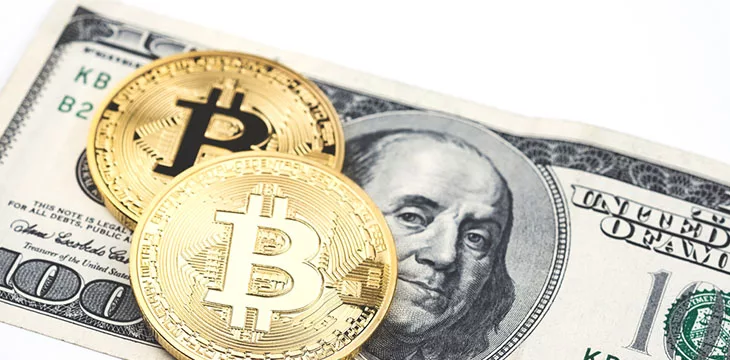|
Getting your Trinity Audio player ready...
|
Digital assets pose ‘novel and complex’ risks to the U.S. banking system that are ‘difficult to fully assess,’ according to the Federal Deposit Insurance Corporation (FDIC)’s annual Risk Review for 2023.
The FDIC is the federal agency in charge of supplying insurance to depositors in American financial institutions. In the event that an FDIC-covered institution fails, the agency steps in to cover its deposits—according to the FDIC, no depositor into an FDIC-covered institution has lost a penny. It has a broad mandate to maintain stability and public confidence in the U.S. financial system. As such, it publishes a yearly report on banking conditions in the United States.
It is the first to be published since the banking chaos of March 2023, which saw the failure of Silicon Valley Bank and Signature Bank of New York caused by mass withdrawals following the FTX collapse.
“In 2022, growth in the crypto-asset industry corresponded with an increasing interest by some banks to engage in crypto-asset activities,” reads the report, going on to remark that “crypto-assets present novel and complex risks that are difficult to fully assess.”
According to the FDIC, key risks include fraud, legal uncertainties, misleading or inaccurate representations, and disclosures, risk management practices exhibiting a ‘lack of maturity and robustness,’ and platform and operation vulnerabilities.
It further highlights the contagion risk within the industry due to the interconnectedness of certain market participants. This, in turn, poses risks to banks with exposure to the sector, as exhibited by Silicon Valley Bank and Signature Bank. Notably, the FDIC singles out stablecoins and their susceptibility to ‘run risk.’ As an example of this phenomenon, the TrueUSD stablecoin had 40% of its reserves in Signature Bank.
As for the FDIC, the report says that the agency and other banking regulators have taken ‘several steps’ in light of these risks. It says that though the FDIC has generally been aware of bank interest in digital asset-related activities in the course of its regular supervision process, as that interest has ramped up, it became necessary to seek further information on the relevant risks.
In April 2022, it issued a letter to FDIC-supervised institutions to notify the agency of the digital-asset-related activities it engages in or intends to engage in and asked them to provide “necessary information that would allow the FDIC to assess the safety and soundness, customer protection, and financial stability implications of such activities.”
The FDIC has also targeted misrepresentations by digital asset companies and others regarding the extent to which their offerings are FDIC-protected. This topic received attention amidst the Voyager collapse, where it was revealed that the FDIC did not cover Voyager despite statements to the contrary by executives.
According to the 2023 report, the FDIC has taken action against more than 85 entities that had misrepresented the extent of their FDIC coverage, a number which includes digital asset firms.
“For example, on August 19, 2022, the FDIC issued letters to five companies that had made false representations stating or implying that crypto-assets were eligible for FDIC insurance, demanding that they and their officers, directors and employees cease and desist from making false and misleading statements about FDIC deposit insurance,” it stated.
The agency also released a joint statement with the Federal Reserve and the Office of the Comptroller of the Currency (OCC) in January 2023, reminding banking entities that any digital asset activities must be conducted in a safe and sound manner and are legally permissible.
The risks flagged by the FDIC have caught the attention of other regulators both inside and outside of the U.S. For instance, the U.K.’s National Crime Agency announced a new department in January to crack down on digital asset crime, which was reported to have increased by 41% from 12 months to March 2023. A lack of both maturity and robustness was inarguably a core driver of the FTX fiasco, where even looking past the worst of the fraud, the bankruptcy CEO said he’d never seen such a “complete failure of corporate controls and such a complete absence of trustworthy financial information as occurred here.”
Sitting behind all this, global legislators are pushing to shore up their digital asset laws and eradicate what legal certainty still exists.
Watch: SEC Commissioner Hester Peirce on Blockchain Policy Matters

 12-19-2025
12-19-2025 




